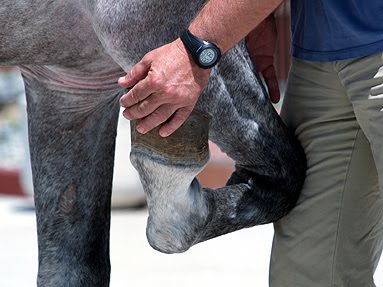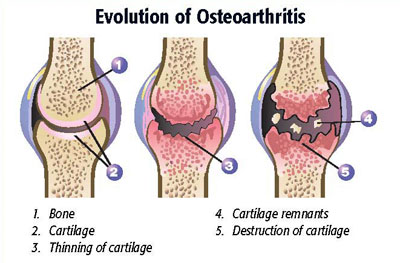Here are the sorts of things that I think about when I’m looking at your horse…..
“For every complex problem there is an answer that is clear, simple, and wrong.” – H.L. Mencken
When I got into veterinary school, I remember thinking that veterinary medicine was going to be fairly straightforward. I thought I was going to learn about what was normal for horses, what could go wrong, and the solutions to whatever problems occurred. Simple, right? Wrong.
Little did I know; taking care of horses is actually a lot more complicated than what I initially thought. Veterinary medicine is a lot more than just trying to fit a treatment to a horse. It’s also about trying to come up with the best treatment that suits the situation – sometimes, you have to treat the person as much as the horse. Here’s what I mean.
Some owners want to be involved with the decisions make about their horses. That means that they’d like me to explain what’s going on. They might be inclined to look around on the internet for information and treatment suggestions. They take a very personal and involved interest in their horse’s care.
Others just want to have the decisions made for them. They may be too concerned, or too nervous, to be able to make a decision. Still another layer may be added if the horse in question is in a training barn. In those circumstances, the owner might not even be aware that the horse has a problem, and the trainer may have his or her own ideas about what the horse needs.
Figuring out what’s wrong with the horse is one thing. Figuring out what the owner/trainer is worried about is another problem entirely. For the owner that wants to be involved, making a decision without consulting with him or her runs the risk of making me look like I’m only interested in running the show. Those owners love to discuss the various treatment options for their horse’s condition, and rarely is there only one way to do things, when it comes to medicine. But discussing treatment options is mostly confusing for owners that want the decisions made for them. In fact, discussing treatment options can make such owners think that I really don’t know what to do! And, as for trainers, if I don’t have a rock-solid relationship, not doing what they want means that I run the risk of them replacing me with someone who will.
Then, there are the treatments themselves. Some treatment decisions are pretty straight-forward. Others, particularly when a problem is chronic, complex, or difficult, don’t have a simple solution; sometimes there’s no solution at all. Sometimes, there’s not even a problem with the horse, but the owner is worried about something. Nonetheless, whether there’s a problem or not, people keep coming up with novel treatments. Unfortunately, most of those treatments won’t work, and aren’t worth the time, or the money (but they keep coming anyway).
Thus, one of my jobs is to try to filter information that’s coming out about new treatments. For example, the last few years have given us treatment “options” for various conditions such as platelet rich plasma, stem cells, hyperbaric oxygen chambers, IRAP®, and “shock wave” machines, to name a few. In making my own treatment decisions, I have to try to evaluate the evidence in support of them, and decide if I should offer them to my clients. To me, medicine should be more than just passing along whatever someone else wants to sell, even if people think that they want it.
To make things even more confusing, people, when presented with identical sets of information, will make different decisions. Thus, whereas I may look at the available evidence for a particularly treatment and decide that it’s not worth offering, someone else – equally competent and qualified – may come up with the exact opposite decision. This has to be confusing to horse owners, most of whom are not thoroughly knowledgeable about the complexities of medicine, but who may also be anxious to do just about anything to help their horses.
So, what am I thinking when I look at your horse? First, I’m trying to figure out what’s wrong. If it’s a simple matter, like a cut, or a bacterial infection, I don’t really have to think about a lot of choices. I sew it up, or start the horse on antibiotics, and, usually, things go pretty well. For conditions where the cures are fairly well-established, the choices are more limited, and everyone does pretty much the same thing. Under such circumstances, everyone is usually happy, and the horse gets better, too!
It’s the complex problems that often give me a headache. They don’t give me a headache because I don’t know what to do; they give me a headache because I have to try to figure out how to best treat the horse within the confines of what I think is best for the horse, how likely the treatment is to work, what the owner can afford, as well as what the owner or trainer thinks is best.
Here’s how it can go. I see the horse. The horse has an injured tendon – fairly obvious because the horse is limping, and the tendon is swollen and sore. An ultrasound would sure help me know more about the problem, and it’s a proven source of good information, but does the owner want to pay for it? How much will the information help me with the treatment?
What’s the “best” treatment? Horses with tendon injuries have generally responded well to rest and controlled rehabilitation, and no treatment can return an injured tendon to it’s pre-injury state; thus, am I really adding anything that’s of benefit to the horse is I “shock wave” it, inject it with stem cells, or put the leg in a magnetic boot?
ASIDE: Not according to the evidence, I’m not.
Should I ask the owner to pay for such treatments if the evidence doesn’t support them? What if the owner wants to do “something,” even if doing something isn’t really necessary? What if the owner is persuaded by the “promise” of a new treatment, even if I know that there’s not any good information out there to back up that promise? What if someone else has something “new” to offer, and doesn’t share my concerns about providing an unproven therapy in hopes that it will “help?” If I don’t go along, will people think poorly of me and call someone else?
See? It’s complicated.
What’s this mean for you? It means you should be proactive in your relationship with your veterinarian. Get involved in the treatment decisions for your horse. Be straight-forward with your expectations. If you want the “latest” treatment, that’s OK, but ask about the cost, and how likely it is to make a difference in the outcome. Look around, and do a little research on your own, but also look for unbiased information from independent sources, not just company-sponsored ads. By working with your veterinarian, you’ll make his or her job a lot easier, and, in all likelihood, you’ll both be happier with the outcome.








